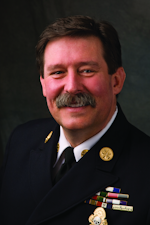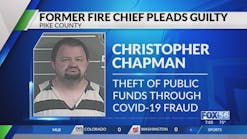In a dangerous profession, such as firefighting, liability is an ever-present concern. It appears to be a complex topic, but, at its heart, liability rests on a very simple principle: liability flows from harm. When someone has it within their ability to prevent harm from occurring, the failure to do so creates the potential for liability. Although there is much more detail in the proverbial weeds that’s related to liability, the failure to recognize that simple principle is at the center of three great fire service myths about liability. Exposing these myths is important to ensure that we address real liability.
Myth 1: To reduce your liability, change the name of your procedures to guidelines.
It isn’t unreasonable to presume that this long-standing myth began with a well-intentioned admonition by someone who had just enough of an understanding of liability to be dangerous.
To prove that it is a myth, let’s start with this example. If the owners of the RMS Titanic changed the name of their procedures to guidelines (or best practices, or recommended practices), would that somehow have helped the owners to avoid liability for running into the iceberg and killing 1,500 passengers? Obviously, no. On the contrary, what needed to happen was the exact opposite. To manage liability, the owners needed a mandatory procedure that required the ship’s captain to take a southern route to avoid icebergs. I wonder whether the lawyers of the company that owned the Titanic might have objected to a written procedure that mandated that captains shall avoid routes that could bring them near icebergs out of a concern for—yes, believe it or not—liability. Think of the irony.
The best way to avoid liability is to avoid liability-creating events. Any policy that makes liability-creating events more likely inevitably will increase liability. Changing the name of procedures to guidelines or best practices will not reduce liability. In fact, to the extent that such changes allow or encourage personnel to engage in risky behaviors (such as shortcuts that bring ships close to icebergs or, the firefighter equivalent, passing through red lights without stopping), it may actually increase liability.
Myth 2: Liability can be handed off to another.
Is liability like a football? Can liability be handed off to someone else, thereby eliminating the chance of being held liable? Can a fire chief who is concerned about old, unsafe apparatus send the mayor and city council an email that asserts that the condition of the fleet creates liability for the city, with the intent of handing off liability to them? Can a fire captain do the same by sending an email to the fire chief? Will this absolve the fire department and/or the officer of liability? For the organization, absolutely not.
As for the officer, the legal standard remains the same: What would the reasonably prudent professional of like skill and training have done under the circumstances. Perhaps the reasonably prudent fire officer would have sent such an email, but if the situation truly was as dire as the email states, would the reasonably prudent professional have done more than simply send an email? Welcome to the slippery slope of liability, where no matter how much you do, it may not be enough to avoid liability.
That isn’t to say that an officer who is in such a situation should not take a courageous stand. Officers should. However, officers must understand that liability isn’t like a football that can be handed off to someone else and, once handed off, the risk of being “tackled” is magically eliminated.
Speaking of magic…
Myth 3: Believing that words in a policy can magically absolve you of liability.
At least once per week, I get a question that’s similar to this: We are working on a policy about XYZ. Is there any special language that you recommend that we include to protect us from liability?
You know the story about Jack and the beanstalk? Magic beans? My sense is that folks are looking for the legalese equivalent of magic beans that somehow will absolve them of liability if their ship hits the proverbial iceberg. This delusion is held by many attorneys as well.
Policies should be reviewed by legal counsel, but any liability-preventing magic will not come from legalese. The “magic” will come from the fact that the policy makes bad outcomes less likely to occur. That means the use of the words shall and must has an important place in some policies. So does the use of the words should and may, where discretion is appropriate. In some cases, changing shall to should can increase the likelihood of a bad outcome. The magic is knowing when each is appropriate for use—and that expertise is not taught in law school. It requires the sound judgment of an experienced, well-trained fire service professional.
Any liability-preventing magic that flows from well-written policies comes from the power of policies to reduce the likelihood of harm. Returning to the Titanic metaphor, anything that the owners put into a policy to avoid liability that fails to reduce the likelihood of harm is the equivalent of rearranging the deck chairs. Attorneys specialize in rearranging deck chairs, obsessed with ensuring that their clients have a sound defense in the event an iceberg is hit.
Avoid the collision
The solution to managing liability is to do everything possible to ensure that you avoid the icebergs in life, not simply ensure that you have a good defense if you collide with one.

Curt Varone
CURT VARONE has more than 40 years of experience in the fire service, including 29 years as a career firefighter with Providence, RI, retiring as a deputy assistant chief (shift commander). He is a practicing attorney who is licensed in Maine and Rhode Island and served as the director of the Public Fire Protection Division at the NFPA. Varone is the author of two books, "Legal Considerations for Fire and Emergency Services" and "Fire Officer's Legal Handbook," and remains active as a deputy chief in Exeter, RI.






